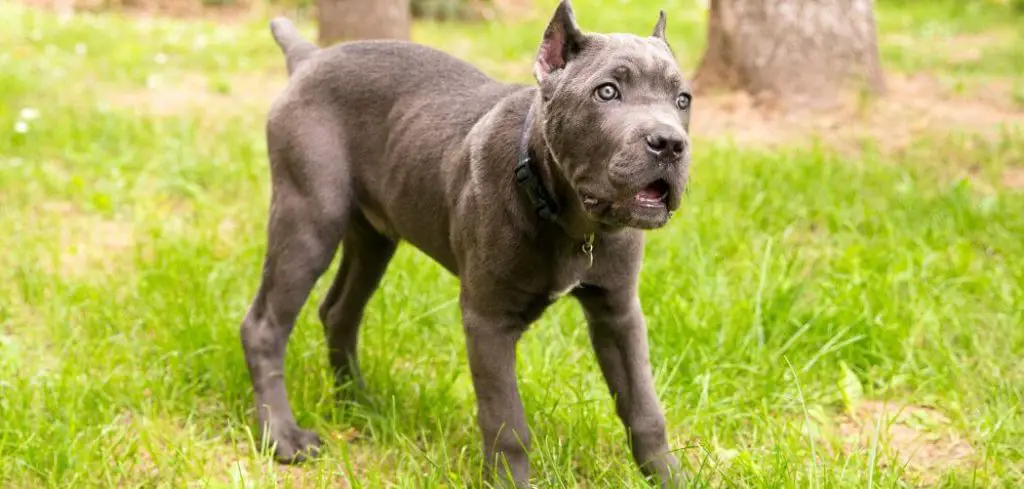If your dog appears to be choking and not eating, it’s a situation that can feel frightening.
Whether they’re gagging, coughing, or pawing at their mouth, these behaviors can signal anything from a mild throat irritation to a life-threatening obstruction.
Wel help you understand what could be causing these symptoms, how to safely respond at home, and when to head to the vet.
Dog Choking and Not Eating — Why It Happens
When a dog is choking and not eating, the cause may be due to a foreign object lodged in the throat, throat injury, esophageal blockage, kennel cough, acid reflux, tonsillitis, or a growth in the mouth or neck area. These issues make swallowing painful or impossible, resulting in gagging, coughing, or retching alongside complete food refusal.

Dog Choking and Not Eating: Common Causes
1. Foreign Object Lodged in the Throat
Dogs often chew on bones, toys, or sticks—and sometimes swallow pieces that get stuck in the throat or upper esophagus.
This is one of the most immediate reasons for choking and not eating. The object may partially block the airway or make swallowing painful.
Signs include:
Gagging or retching
Excessive drooling
Pawing at the mouth
Sudden disinterest in food
If you suspect a lodged object and can’t see it safely, don’t try to remove it yourself—your vet will need to sedate your dog or use endoscopy.
2. Esophageal Obstruction or Stricture
Sometimes, an item like rawhide, fabric, or even a large tablet can become lodged in the esophagus, leading to a choking sensation and refusal to eat.
In some cases, scar tissue from past damage can cause esophageal narrowing, making it painful to swallow.
Additional symptoms:
Repeated swallowing motions
Regurgitation shortly after eating
Coughing while trying to eat
Arching of the back or neck
Veterinary imaging like X-rays or endoscopy may be needed to locate and remove the blockage.
Related: Dog vomiting and not eating (Causes and when to worry)
3. Throat Injury or Inflammation
If your dog was recently chewing on a sharp stick or suffered minor trauma to the throat, the resulting inflammation can make eating or swallowing painful.
Even rough play with collars or leashes can sometimes bruise the larynx area.
You may notice:
Yelping when touched under the jaw
Refusal of even soft food
Mild coughing or grunting sounds
Inflammation often resolves with rest, anti-inflammatories, or in rare cases, antibiotics.
4. Acid Reflux or Esophagitis
Chronic acid reflux, or esophagitis, can cause throat burning and choking-like symptoms—especially after eating.
This discomfort may lead your dog to avoid food altogether to prevent more pain.
Signs of reflux include:
Burping or licking lips
Coughing shortly after meals
Regurgitating small amounts of food
Appetite loss but interest in food
Your vet may prescribe medications like sucralfate, omeprazole, or dietary changes to ease symptoms.
5. Kennel Cough or Upper Respiratory Infection
If your dog recently visited a kennel, daycare, or park, they may have picked up kennel cough, a common cause of persistent dry coughing that sounds like choking.
While usually mild, it can irritate the throat enough that your dog avoids food.
Typical signs include:
Dry, honking cough
Gagging after coughing fits
Clear nasal discharge
Fatigue and low appetite
Kennel cough is usually self-limiting, but antibiotics or cough suppressants may help in moderate cases.
6. Tumors or Growths in the Mouth or Throat
In older dogs, unexplained choking and appetite loss may be due to oral tumors or growths in the mouth, tonsils, or upper neck region. These can physically obstruct swallowing or make it painful.
Symptoms may include:
Blood in saliva
Swelling under the jaw
Bad breath or drooling
Visible mass or ulcer in the mouth
A thorough oral exam and biopsy may be necessary to determine the nature of the growth.
7. Tonsillitis or Pharyngitis
Inflamed tonsils or throat tissues can lead to difficulty swallowing, a dry cough, and avoidance of food.
This can occur after a cold, mouth infection, or as part of a broader immune response.
Look for:
Painful or slow chewing
Retching without vomiting
Thick saliva or gulping
Intermittent coughing
Tonsillitis is usually treated with anti-inflammatories or antibiotics, and dogs typically recover quickly.
What to Do If Your Dog Is Choking and Not Eating
If your dog is breathing but gagging or showing signs of discomfort when eating, here’s what you can do at home:
Inspect their mouth gently if safe—never stick your fingers deep into their throat
Offer soft food or broth to test if swallowing is painful or blocked
Use a humidifier or steam room to soothe irritated airways
Avoid collars or leashes near the neck until cleared
Keep your dog calm and quiet—excitement can worsen symptoms
If your dog is still showing signs after a few hours, or their breathing becomes affected, don’t delay professional care.
When to Call or Visit Your Vet
Seek immediate veterinary help if:
Your dog can’t breathe or is gasping
You see visible swelling around the neck or jaw
They haven’t eaten for more than 24 hours
They’re gagging or coughing persistently
There’s blood in their saliva or vomit
Emergency care may involve sedation, imaging, endoscopy, or surgery depending on the root cause.
Read more: My dog has Cushing’s and is not eating (Why it happens)
Key Takeaway
When your dog is choking and not eating, it’s often more than just a passing issue.
It may be caused by something lodged in the throat, inflammation, infection, or even a more serious condition that’s impairing swallowing.
While mild cases can resolve with rest and soft food, others need swift veterinary care.
Trust your instincts—if your dog is acting off or refusing to eat for more than a day, reach out to your vet. Early action can prevent complications and keep your dog safe and comfortable.
